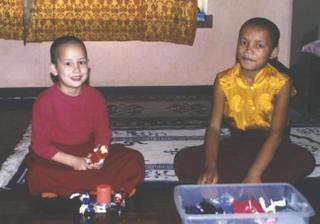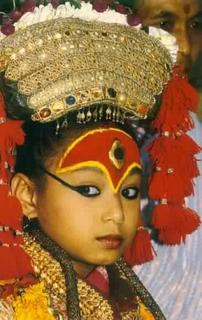Anandibai Joshi

Anandibai Joshi, the first Hindu woman to obtain a medical degree in the Western hemisphere, was born Yamuna Joshi on this day in 1865 in Poona, India.
Although she only lived to be nearly 22, the example of Anandibai Joshi's life provided inspiration to generations of Indian women seeking education and, in particular, those who aspired to become physicians. Born to a wealthy Brahmin family, Anandi's parents indulged her love of learning and permitted a local Sanskrit scholar, Gopal, to teach her. At age 9, Anandi married Gopal (a widower 20 years her senior) and at 14, she gave birth to their first and only child. The infant survived only 10 days, but in her grief Anandi turned her thoughts to what could have been done to save her child: she became convinced that if there had been a female doctor available, the child might have lived. At 14, she became determined to become a doctor.
Despite the fact that Hindu culture discouraged the education of women and could not even contemplate a woman as a professional, let alone a doctor, Gopal was broad-minded and supportive of his wife's dream. In 1880, he sent a letter to Royal Wilder, a well-known American missionary in India and publisher of Princeton's Missionary Review, expressing his wife's interest in attending medical school in the U.S. and inquiring about a suitable post there for himself. Wilder superciliously responded with a plea for their conversion to Christianity, and added insult to injury by publishing the correspondence in the Review.
Shortly thereafter, however, a Mrs. Carpenter of Roselle, New Jersey picked up that edition of the Review while waiting to see her dentist, read Gopal's letter, and was moved by the man's earnest hopes for his wife. She immediately wrote to Gopal offering to host Anandi if she would come to the U.S. to study. Anandi and Mrs. Carpenter began an enthusiastic correspondence about Hindu culture and religion, through which Mrs. Carpenter noted that Anandi possessed a rich command of English and an active mind. Although Mrs. Carpenter's attentions were encouraging, Gopal knew he would not be able to leave his responsibilities in India. It was considered unsuitable for a married Hindu woman to travel alone, but Anandi was determined to go, and Gopal relented.
When Anandi's decision became known within her Bengali community, however, the two of them found themselves at odds with their neighbors -- some even resorted to spitting at Anandi and throwing stones at her when she walked through the streets carrying her books. The Christians in the community, on the other hand, did not oppose her plans -- they only wanted her to submit to Christian baptism before she left. To set everyone straight, Anandi decided to explain her decision to go to the U.S. alone to obtain a medical degree in an address at Serampore College Hall in Calcutta; according to some, it would be the first time an Indian woman would deliver a public address. She cited the need for Hindu female physicians in India, explained her goal to open a medical college for women in India, described the persecution that had been dealt to her and her husband, and made a startling pledge: "I will go as a Hindu and come back to live as a Hindu."
Following the publication of her speech, contributions came in from throughout India -- including 200 rupees from the Viceroy. She sold her gold wedding bangles and booked passage on the City of Calcutta for New York in the company of some European women, where she was met in June 1883 by Mrs. Carpenter. Soon afterward, she wrote to the Women's College of Pennsylvania asking to be admitted to the medical program (the first women's medical program in the world) and, moved by her passion, the dean of the medical school asked her to enroll.
Thus, Anandi began her American medical education at the the age of 19, and she was a model student, submitting a thesis on "Obstetrics among the Aryan Hindoos" and graduating with her M.D. on March 11, 1886. Queen Victoria sent a congratulatory message, and with the news of her achievement, Anandi was offered a job as physician-in-charge of the female ward at Albert Edward Hospital in Kolhapur, India.
In the meantime, however, Anandi had contracted tuberculosis -- perhaps worsened by a combination of cold weather and an unfamiliar diet -- and her health was steadily declining. Her friends sent her to Colorado Springs for her health, but she returned without improvement. Nevertheless, she returned to India, receiving a hero's welcome, while the newspapers closely monitored her physical condition. She died on February 26, 1887, in her mother's arms at her birthplace, and was mourned throughout India, celebrated for her courage and perseverance. Her ashes were sent to Mrs. Carpenter, who placed them in her family cemetery in Poughkeepsie, New York.
Labels: Hinduism, India, Medicine, Trailblazing Women







